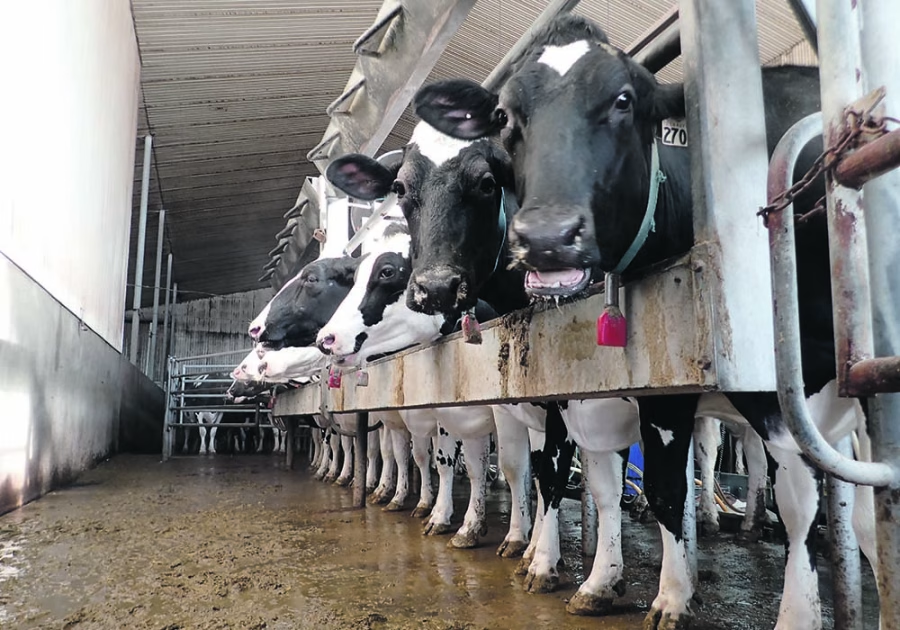Will German dairy workers’ wage talks avert a nationwide strike? Discover the stakes and potential impacts on the industry as negotiations reach a critical point.

Germany’s dairy industry, an essential element of the country’s agricultural economy, is now facing the possibility of a statewide strike owing to delayed pay discussions. This impending disruption jeopardizes thousands of farmers’ livelihoods and consumers’ critical supply of dairy products. Currently, 19,000 workers at 28 dairy and cheese companies in Bavaria are participating in ‘warning strikes,’ laying the groundwork for more extensive measures if discussions fail. Major industry giants such as Danone, Ehrmann, and Nestlé are at a crucial point, with just hours till the next round of discussions. These choices will affect the dairy ecosystem, from factory workers to farmers, influencing everything from supply chains to milk pricing in a volatile market.
| Company | Offered Wage Increase (Year 1) | Union Demand (Monthly) | Current Impact |
|---|---|---|---|
| Danone | €150 | €411 | 30 shifts paralyzed |
| Ehrmann | €150 | €411 | 25 shifts paralyzed |
| Nestlé | €150 | €411 | 35 shifts paralyzed |
The Crescendo of Discontent: Escalating Tensions and Strategic Labor Actions in Bavaria
The buildup to this probable statewide strike comes from weeks of rising tensions and labor actions by dairy workers in Bavaria. These ‘warning strikes,’ which included 19,000 workers from 28 dairy and cheese manufacturers, were a forceful protest to win higher salaries. They purposefully interrupted over 90 shifts, resulting in substantial production downtime and financial loss. By stopping operations, the union demonstrated its power to organize and compel employers, laying the groundwork for essential pay discussions. Each warning strike has increased urgency, emphasizing the fundamental divisions in the German dairy industry.
Power Players at the Bargaining Table: The NGOs and Corporate Giants Shaping Germany’s Dairy Future
The Gewerkschaft Nahrung-Genuss-Gaststätten (NGG) is essential to these contentious discussions, with the food trade union strongly lobbying for the workers. Mustafa Öz is a crucial individual who articulates demands and strategizes labor activities. Major dairy corporations like Danone, Ehrmann, and Nestlé represent employers. These industry titans are critical in determining the sector’s economic environment via wage reactions and negotiating tactics. The conversation will likely impact worker relations in Germany’s dairy sector.
A Call for Fairness: Advocating Equitable Wage Distribution in Germany’s Dairy Sector
The union’s proposal for a €411 monthly salary rise per employee stems from a desire to promote industry fairness. Mustafa Öz and NGG emphasize the need for a fixed rise in narrowing the income disparity. By winning a significant salary increase, the union hopes to assure steady financial improvements for all workers, especially those in lower-paid areas such as manufacturing and warehousing. This requirement is intended to establish a more balanced and equal economic environment. Furthermore, the €411 number tackles growing living expenses and inflation, acting as a buffer against economic stress and a step toward enhancing the quality of life for dairy workers.
Employers’ Strategic Counter-Offer: Balancing Immediate Relief and Long-Term Fiscal Prudence
Employers reacted with a counter-offer that included two years of incremental wage increases: a fixed €150 rise in the first year and a 2.5% hike the following year. This method seeks immediate financial comfort while promoting progressive pay increases and balancing employee demands with economic discipline.
Clock Strikes Tense: Imminent Deadline Fuels Heated Wage Negotiations in Germany’s Dairy Sector
The present stage of discussions is quite heated, with a tangible feeling of urgency. As negotiations reach their third crucial phase, Mustafa Öz, the primary negotiator and regional chairman of NGG Bayern, has highlighted the essential aspect of the following discussions. “We are sending a clear message to the employers: just a few hours remain before the next meeting at the collective bargaining table. Öz added that warning strikes would continue until a fair agreement is reached. The union asks for a significant monthly salary rise of €411 ($447) per employee, contrasting with the employers’ cautious offer. This deadlock might lead to a full-scale industrial strike. The union’s demands for equal pay distribution, especially for lower-paid workers, provide a moral dimension to the discussions. As deadlines approach, the union’s haste highlights the importance of these negotiations for the future of Germany’s dairy business.
The Ripple Effect: Unveiling the Far-Reaching Impact of Prolonged Labor Disruptions in Germany’s Dairy Industry
The consequences of these warning strikes have considerably affected production operations, resulting in the shutdown of nearly 90 shifts. This suspension in operations has caused significant financial hardship for the firms, resulting in immediate revenue losses and unfulfilled production limits. Inefficiency has a cascade effect on supply chain fulfillment, startup costs, idle labor compensation, and possible fines for failing to meet contractual commitments. The combined effect of these continuous strikes jeopardizes the stability and predictability required for the dairy industry’s economic sustainability.
Nationwide Strike Looms: An Escalating Crisis for Germany’s Dairy Industry
The German dairy sector might face a catastrophic statewide strike if talks fail. Building on the earlier ‘warning strikes,’ this might interrupt operations at dairy and cheese plants, slowing output and increasing supply chain concerns. With over 19,000 workers poised to strike, the consequences would be far-reaching. Immediate shortages of dairy goods in supermarkets and severe financial losses would put pressure on allied businesses such as retail and transportation. The disruption might result in waste and a storage backlog, further affecting operations.
Consumer prices may increase as more extraordinary manufacturing expenses are passed down. The economic burden may pressure the administration to reconsider austerity measures and agricultural policy. The strike may inspire similar strikes in other areas, causing industrial turmoil across Germany. Finally, this might drive all stakeholders in the dairy business to address long-standing challenges, such as pay fairness and production costs, crafting a more sustainable future for the sector.
The Bottom Line
The stakes are very high since the German dairy sector is on the verge of a statewide strike. The continuing wage conflicts and company counter-offers need prompt action. These discussions will influence the future of labor relations and production efficiency in this critical industry. The planned talks are crucial for settling existing issues and establishing a precedent for future industry standards. Union leaders and business executives’ decisions will influence the whole sector, from factory floors to distribution networks. Both parties must emphasize long-term stability and fair progress above short-term profits. This labor unrest will impact legislative choices, market circumstances, and the future of Germany’s dairy sector. Stakeholders carefully monitor the situation, looking for a solution that fosters justice, sustainability, and mutual prosperity.
Key Takeaways:
- German dairy industry facing potential nationwide strike due to unresolved wage negotiations.
- Recent wave of ‘warning strikes’ has disrupted production in 28 dairy and cheese factories.
- Food trade union NGG demands a significant monthly wage increase of €411 per employee.
- Employers counter with a €150 fixed increase for the first year and a 2.5% increase in the second year.
- Third round of wage negotiations scheduled with major dairy companies like Danone, Ehrmann, and Nestlé.
- Union emphasizes the urgency of negotiations, continuing strikes until an agreement is reached.
- Strikes could have a far-reaching impact on labor relations and production dynamics in the dairy sector.
Summary:
Germany’s dairy industry is on the brink of a statewide strike due to delayed pay discussions, potentially threatening thousands of farmers’ livelihoods and consumers’ critical supply of dairy products. 19,000 workers at 28 dairy and cheese companies in Bavaria are participating in warning strikes, with major industry giants like Danone, Ehrmann, and Nestlé at a crucial point. The Gewerkschaft Nahrung-Genuss-Gaststätten (NGG) is crucial to these discussions, with Mustafa Öz advocating for workers. The union proposes a €411 monthly salary increase per employee to promote industry fairness and ensure steady financial improvements for all workers, particularly those in lower-paid areas like manufacturing and warehousing. Employers have responded with a strategic counter-offer of two years of incremental wage increases, aiming to provide immediate financial comfort while promoting progressive pay increases and balancing employee demands with economic discipline. The union’s haste highlights the importance of these negotiations for the future of Germany’s dairy business.












